- Home
- Best Yarn for Beginning Knitters
How to Choose the Best Yarn for Beginning Knitters
Best Yarn for Beginning Knitters by Janice Jones
So, you've decided that knitting might be right for you and are ready to make some preliminary purchases including yarn. You go into that favorite craft store and wander down isle upon isle of beautiful yarns. You see so many you like, but just can't choose.
That is where I believe this article will help. There is actually an art and a science for finding the perfect yarn. While I am focusing on beginners, I hope what follows will be helpful for those who consider themselves past the beginner stage.
While I initially wrote this article for knitters, you can also consider most of the yarn suggestions to be best yarns to learn crochet also.
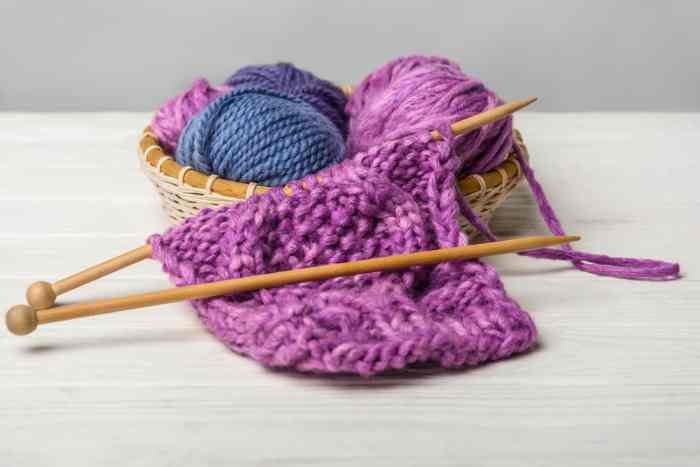
What to Look for When Choosing a Yarn
There are six things to consider :
- Color
- Texture
- Weight
- Fiber Content
- Shape of the Packaging
- Price
Best Yarn For Beginning Knitters: Chose Color Wisely
While still learning how to knit, it is always best to choose a light colored yarn. White, cream colors, light tan, or pastels work very well for beginners. Why?
As you learn you will be learning all about knit stitches, not only how to make them, but how to identify them and how to differentiate between those that look correctly made and those that may be a mistake. Only light colors will help you with this task.
That doesn't mean that you need to make a white sweater, if that beautiful navy blue yarn is really what you wanted. It does mean that while practicing, you should use light colored yarn.
Best Yarn For Beginning Knitters: What is Texture
By texture, I am referring to the many ways yarns are made. As you wander down that aisle, look at the different types of yarn available.
There will be smooth, solid colors and then there are those novelty yarns. Novelty yarns are anything that doesn't fall within the category of solid smooth yarns such as uneven thicknesses, homespun, heathered, tweed, even those that are laced with glitter, ribbons, and other embellishments.
These types of yarns are hard to manage when you are just getting started and will likely frustrate you, so pass on those types of yarn.
Best Yarn For Beginning Knitters: Yarn Weight
This is often one of the most difficult areas for beginners to grasp, but it need not be confusing. Yarn is sold based on the thickness of the actual fiber, not by the weight of the ball of yarn.
The Craft Yarn Council has standardized this and each yarn should come with a ball band that marks the weight of the yarn by a specific number.
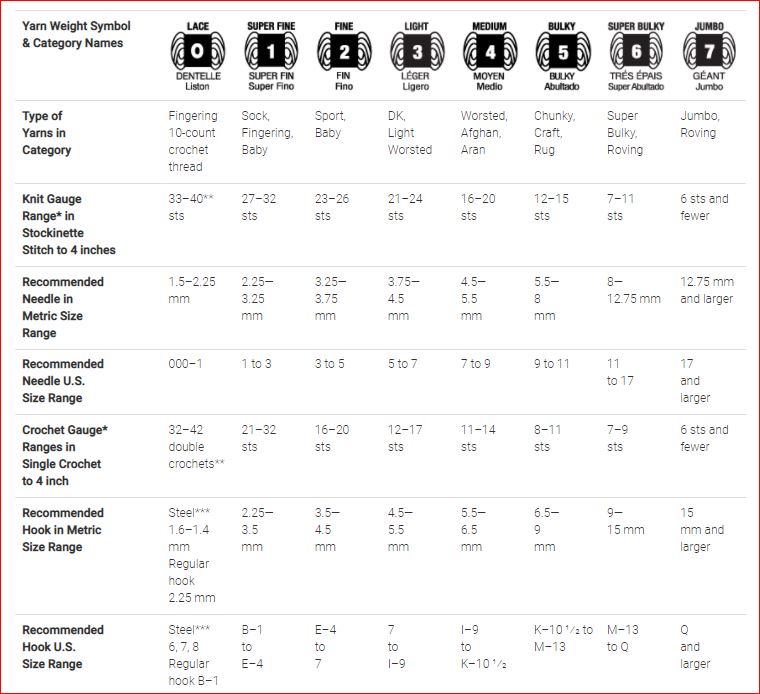 Yarn Craft Council
Yarn Craft CouncilThe thicker the yarn, the larger the number. For beginners, I recommend that you look for Number 4 medium weight yarn. It is the easiest to use.
You will also notice that the standard also calls for using a US 7-9 or 4.5 to 5.5 mm knitting needles.
There is some differences within the yarn industry so some yarns will be labeled as being a number 4 and recommending a number US 7 needle where others suggest a number US 8 needle.
Get into the habit of checking the ball band of the yarn you choose.
Best Yarn For Beginning Knitters: Fiber Content
An entire book could be written on the fiber content of yarns suitable for knitting, and indeed, there is at least one that I can recommend. The Knitter's Book of Yarn, by Clara Parkes, is my favorite for describing what's available.
There are basically three different groups of fibers: Synthetics, Naturals, and Combinations. Within each category, there are so much available that it boggles the mind.
Natural Fibers
 Sheep Wool
Sheep Wool Alpaca Yarn
Alpaca Yarn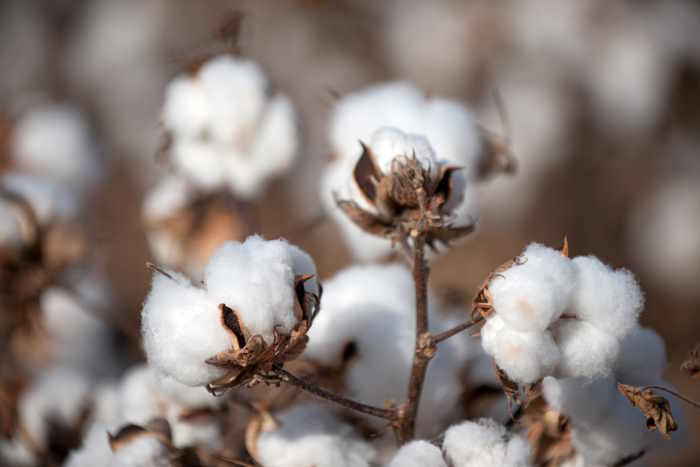 Cotton Yarn
Cotton Yarn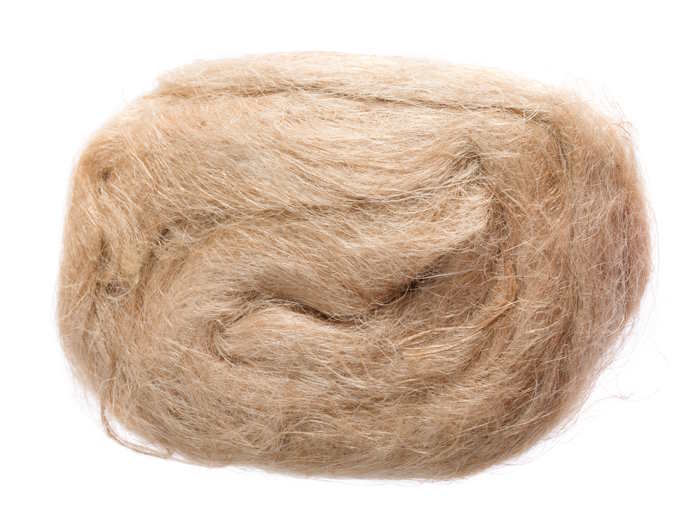 Raw Flax
Raw FlaxThe Natural group is subdivided into plant verses animal fibers.
Sheep's wool is likely the most common form of fiber from animals and also a great choice for beginners. Goats provide us with Mohair from the Angora Goat and Cashmere from the Cashmere Goat.
Another group of animals that lend us their hair is the Camelid family: Camel, Alpaca, Llama, Guanaco and the vicuna.
You can also purchase wool from the Yak, opossum and silk worm
From plants, we have cotton, hemp, and flax (linen). We know have soy, bamboo and even corn fiber that is used and spun into fiber.
Artificial Yarns
Moving onto the artificial fibers, the first to be introduced was rayon in 1924. Following in 1860, Acetate was developed. First developed as a varnish for military aricraft it was not produced into yarn until 1912. Lyocell is one of the latest fibers that came into the market in 1992.
Today, we have the choice of nylon, polyester, and acrylic that is used to make a wide range of yarns. These are the most economical for beginning knitters.
Combination Fibers
It is not uncommon to see synthetic fiber combined with a natural fiber to create a yarn that has properties of both.
Beginners often gravitate towards wool or synthetic blends and there is a good reason for that. Yarns made with 100% wool are easy to manage, create fabrics that are easy to block and view individual stitches.
Those yarns made with mostly synthetic fibers or combination fibers are also the most economical. They are also readily available and make them a good choice for beginning knitters.
Best Yarn For Beginning Knitters: Shape of the Packaging
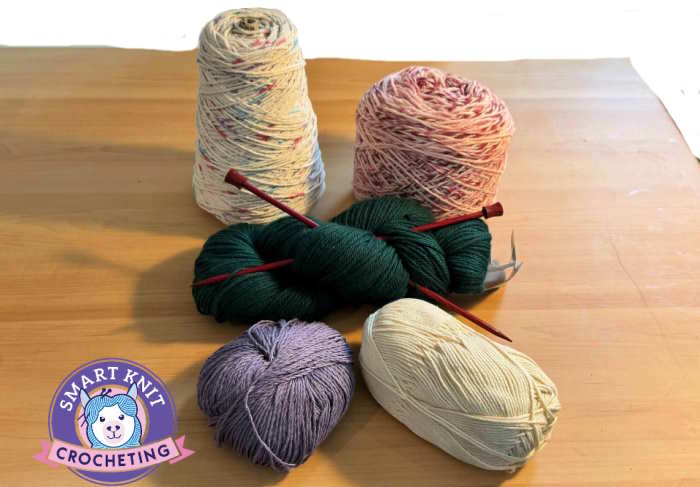
How the yarn is packaged should not be a big deal when deciding which yarns are beginner friendly, but it is, and here is why that is.
Yarn is packaged in different shapes including balls, skeins, cakes, hanks and cones. The shape really doesn't determine which type of yarn a beginner should use, but some shapes are easier to use than others. Let's look at each one individually:
Balls look, like, well balls.
Cakes are rounded with a flat bottom and can sit stable on a flat surface.
Skeins are those you see mostly in craft stores. They are oblong and the working yarn can be pulled from either the inside of the skein or unraveled from the outside.
Hanks are oblong and are twisted on itself but can be opened up into a large ring. Hanks need to be first wound into a ball if you don't want a horrible detangled mess. You can do this manually or with a ball winder. If you purchase these from yarn shops, they will often wind them into a ball for you.
Cones are normally easy to unwind but may be more suitable for machine knitting.
The easiest to use for beginners are skeins, balls and cakes. Don't rule out hanks, but remember you will need to wind them into a ball before you can use them. These forms are also most common in large craft stores. Cones and hanks are readily available in specialty knit shops and online.
Best Yarn For Beginning Knitters: Price
Price is often the biggest factor when choosing a yarn to learn to knit. Choosing an economical fiber is the best way to learn to knit. While more expensive fibers may feel luxurious, they are not practical for beginners. Not only are most too expensive, they also many be more difficult to use when knitting.
Best Yarn for Beginning Knitters: Tips
Everyone has their favorites and the ones listed below, represent those that meet all the criteria of the best yarn for beginning knitters as described above. This means that they come in
- Light, solid colors
- Number 4 worsted weight yarn
- 100% wool, synthetic or a combination of both natural and synthetic
- Many beginners prefer to purchase acrylic for practice before purchase the yarn they will use for a project.
- Yarns spun into balls, skeins, or cakes
- Yarns that are reasonably priced
RED HEART Super Saver Jumbo Yarn, Soft White
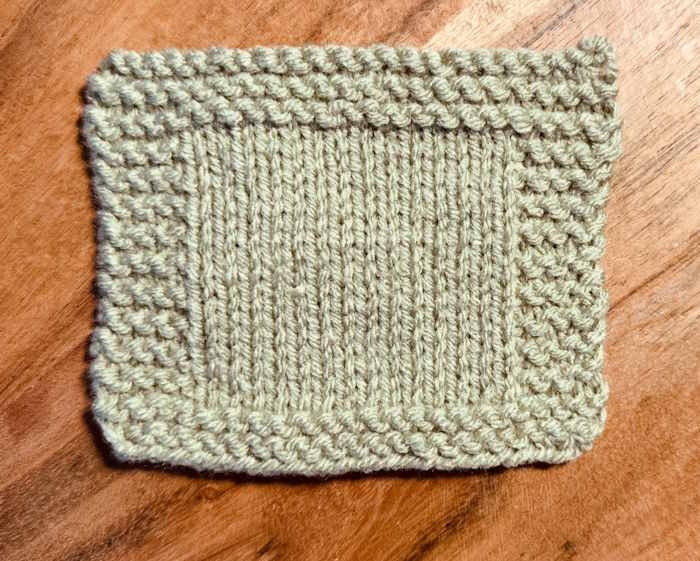
Purchase on Amazon
- Made of 100 percent acrylic material
- Worsted Weight Number 4
- Economical
- Comes in a pull out skein of 14 ounces
- Multiple colors: Chose a solid color
Yarnspirations Patons Classic Wool Worsted
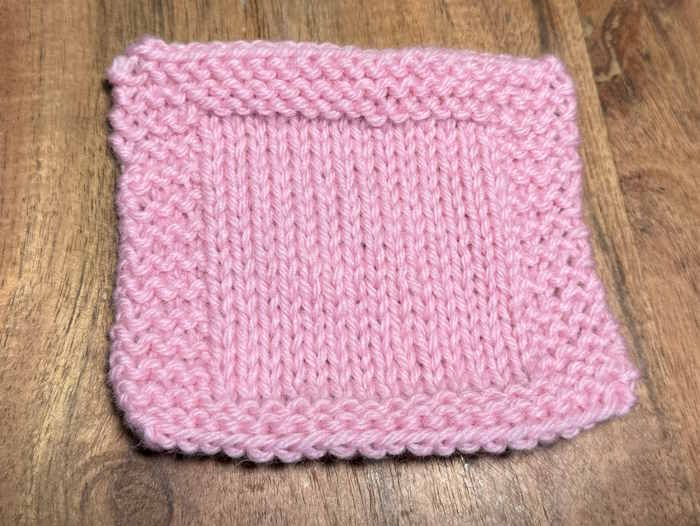
Purchase on Amazon
- Easy to work with and soft
- Nice stitch definition, drapy
- Great for an heirloom design
- 100% Wool
- Very easy to see each stitch
Lion Brand Basic Stitch
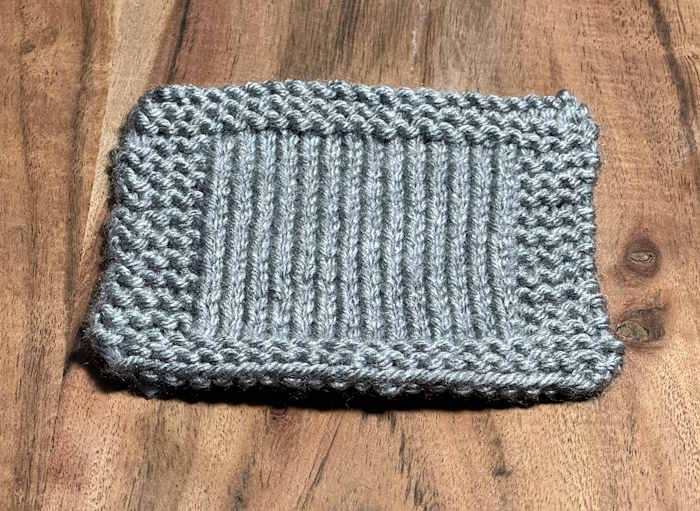
Purchase on Amazon
- Acrylic
- It's soft
- Durable
- Machine washable
- Anti-pilling
- Available in a wide variety of colors
- Allergen-free
Lion Brand Yarn 150-098F Fishermen's Wool Yarn, Natural
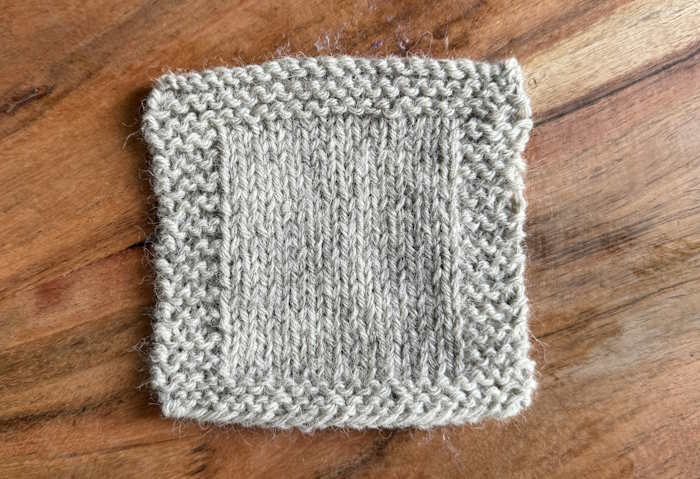
Purchase on Amazon
- 100-Percent Pure Virgin Wool with natural lanolin oil is soft and warm; Ideal for ski and fisherman sweaters, hats, scarves, throws, etc
- This yarn is great for felting once it is machine washed and can also be dyed
- Hand wash; No bleach product may be used; A machine dryer may not be used; Lay out horizontally for drying
- 4 Medium: Worsted-weight, Afghan, Aran Yarn; 8.00-Ounce, 465 yard
- More economical than most for 100% Wool
Cascade 220 100% Wool
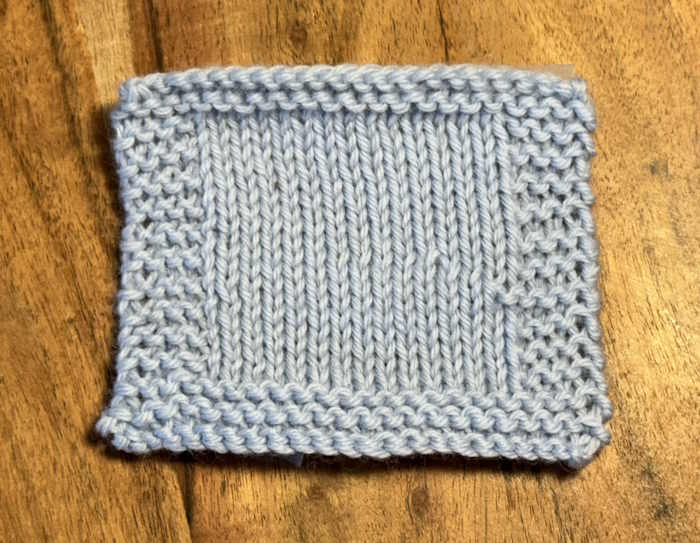
Purchase on Amazon
- Made of 100% Peruvian highland wool
- It's warm
- Durable
- Large color range
- Decent price point
- Comes in a hank that will need to be wound into a ball
- Must be hand-washed
Knit Picks Wool of The Andes Worsted Weight Yarn (1 Ball - White)
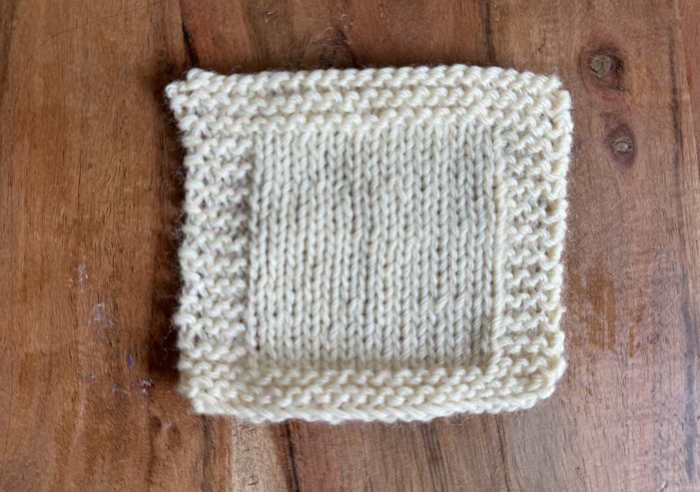
Purchase on Amazon
- 100% Peruvian Highland Wool yarn
- Hand wash in lukewarm water and dry flat; yarn can felt with warm water and agitation
- Many colors from which to choose: Choose a light solid color
- Medium priced
Lion Brand's Schitt's Creek
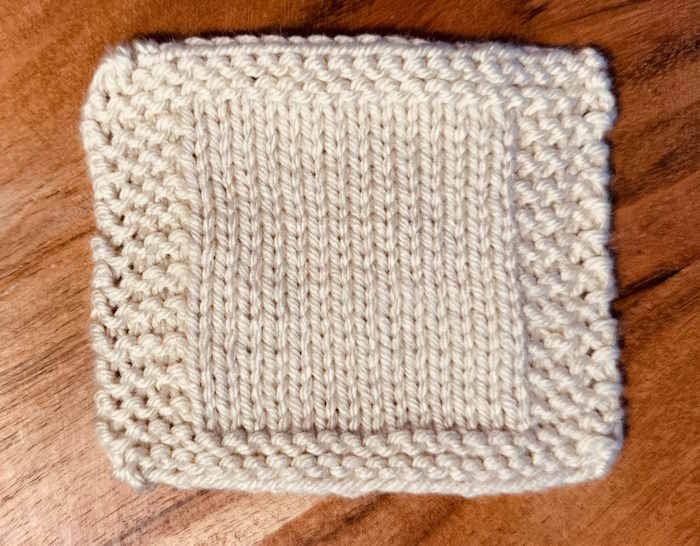
Purchase on Amazon
Based on the iconic television show with the same name, this is a worsted-weight yarn that is 100% Acrylic, meaning that is washable and dryable. It comes in a variety of colors and tons of yardage on one skein (372 yards to be exact)
- Soft
- Machine washable
- Good variety of color choices
- Doesn't split
- Squishy
Lion Brand Yarn Lion Brand Wool-Ease Yarn
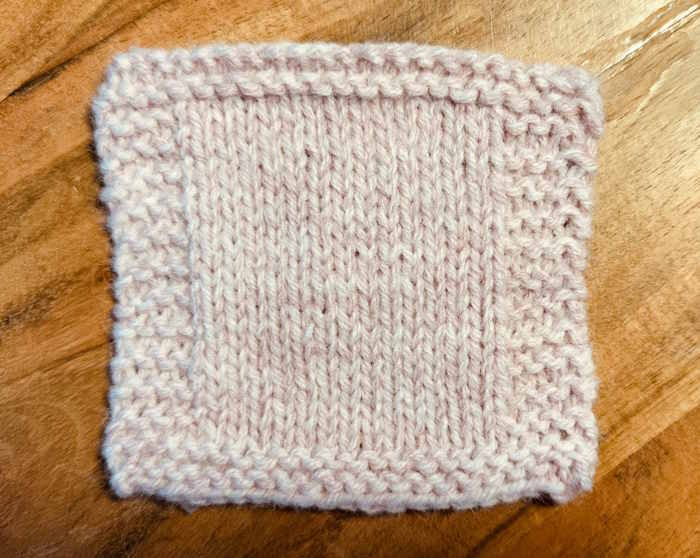
Purchase on Amazon
Beginners often shy away from wool yarn but they shouldn't. Wool is easier to block and looks great. With that said, if you have allergies to wool, stick to acrylic initially. If you do chose this yarn, avoid the heathers until you are more experienced. The color name should include the word "heather" to distinguish them from solid colors
- 4-ply worsted weight wool blend yarn
- Machine washable
- Needle Size: US 8 (5 mm)
- Wool and acrylic blend
Conclusion
I hope this gives you some idea about the best yarn for beginning knitters. Remember, you can't go wrong with light colors and number 4 or 5 weight yarn.
Acrylics, wool, and wool blends are all idea for beginners, so don't shy away from those slightly more expensive yarns. Still wool is a good economical choice and will last for years keeping you warm in the winter for many seasons.
About Janice
Hi, I’m Janice, the voice behind Smart-Knit-Crocheting. I love to knit and crochet and even more, I love teaching others what I know.
Though I learned to knit and crochet as a child, I didn’t get serious about these amazing hobbies until I retired. I’m a certified knit and crochet instructor through the Craft Yarn Council and am working on becoming a Master Hand Knitter through The Knitting Guild Association.
I’m currently living with my husband of over 50 years and our 6 Shih Tzu dogs.
I love hearing from you, so please drop me a line and let me know what you’re working on, whether you love knitting or crocheting more, and if you have any questions. Please visit my about me page for more information.
Happy Crocheting






